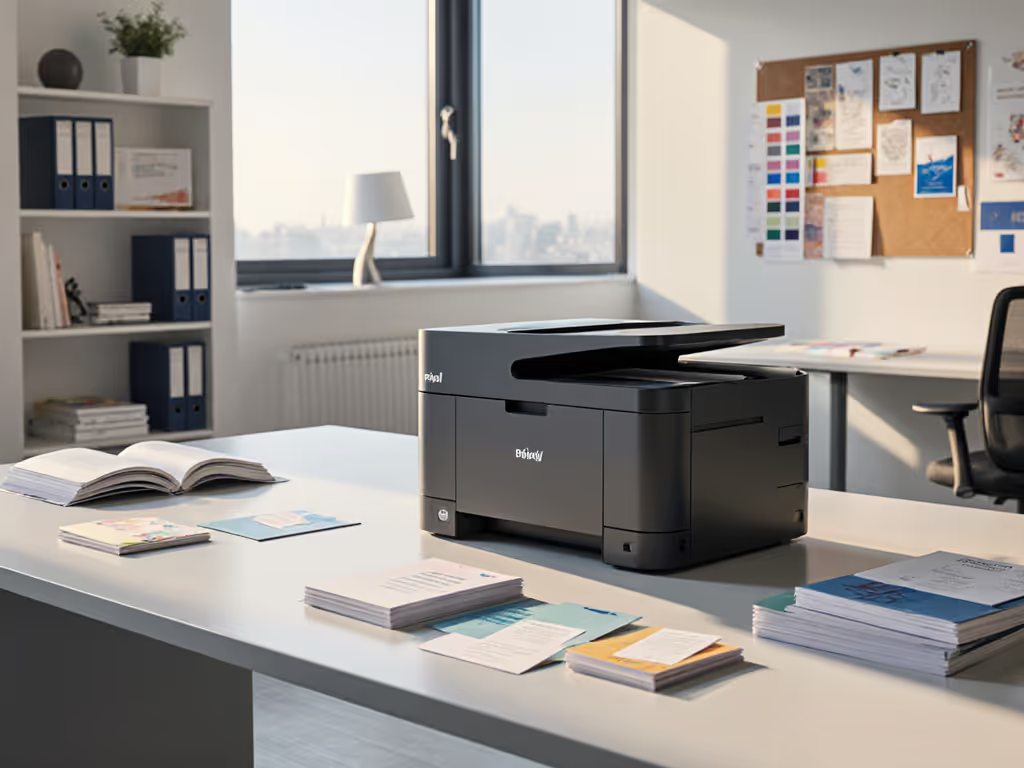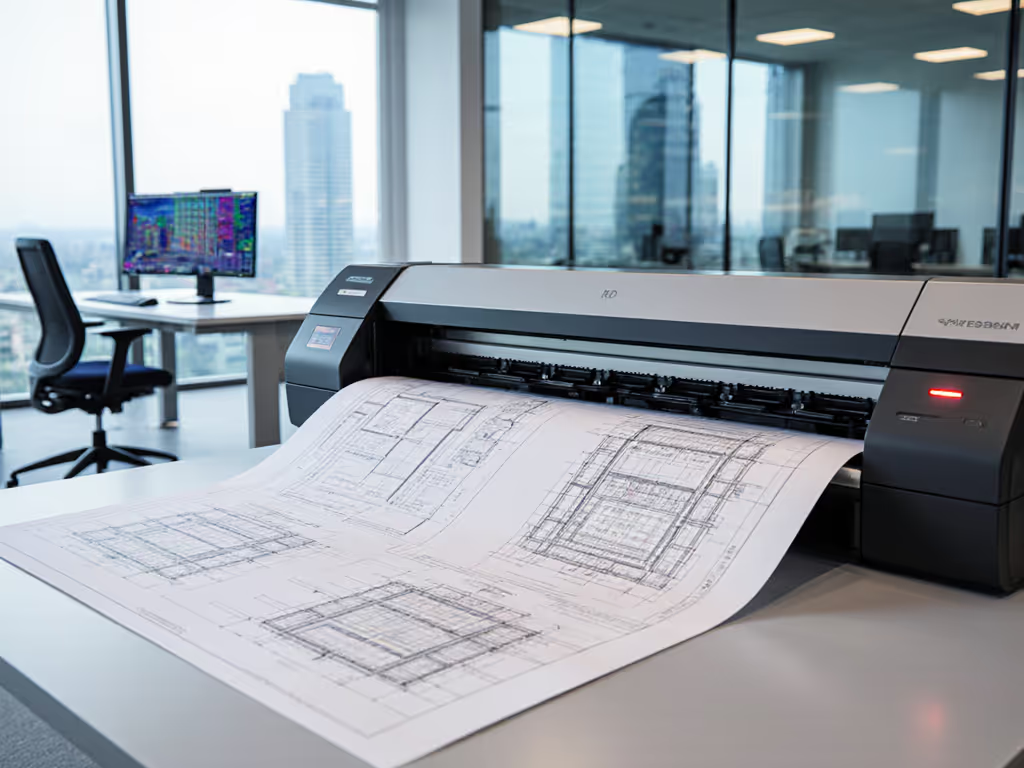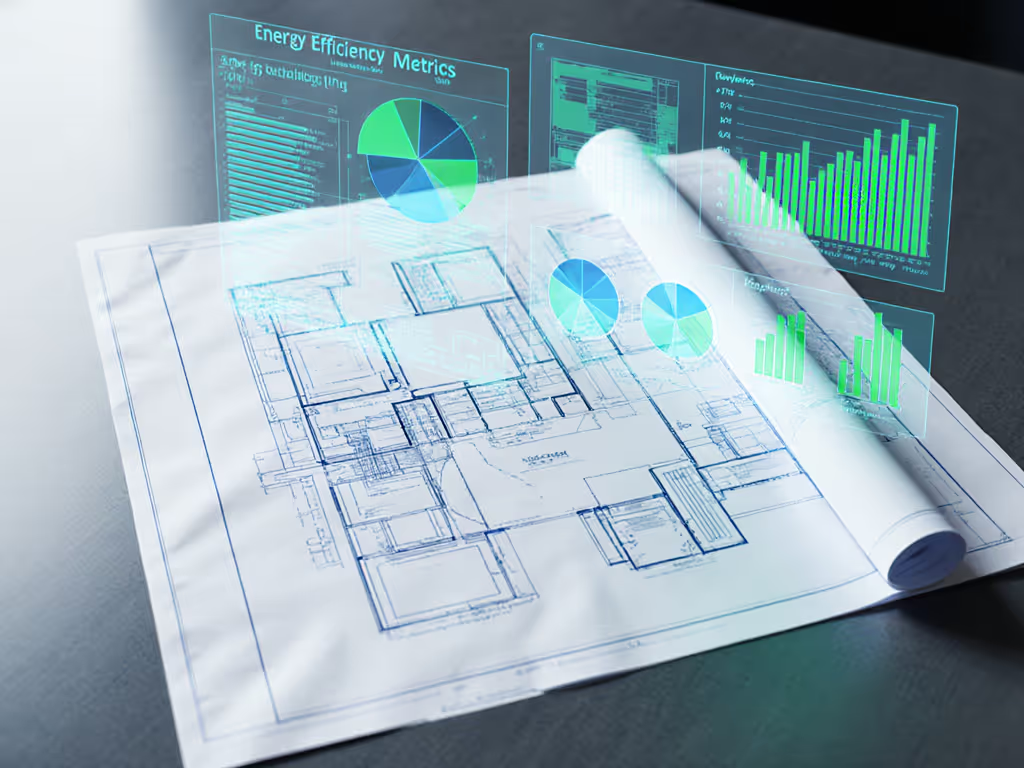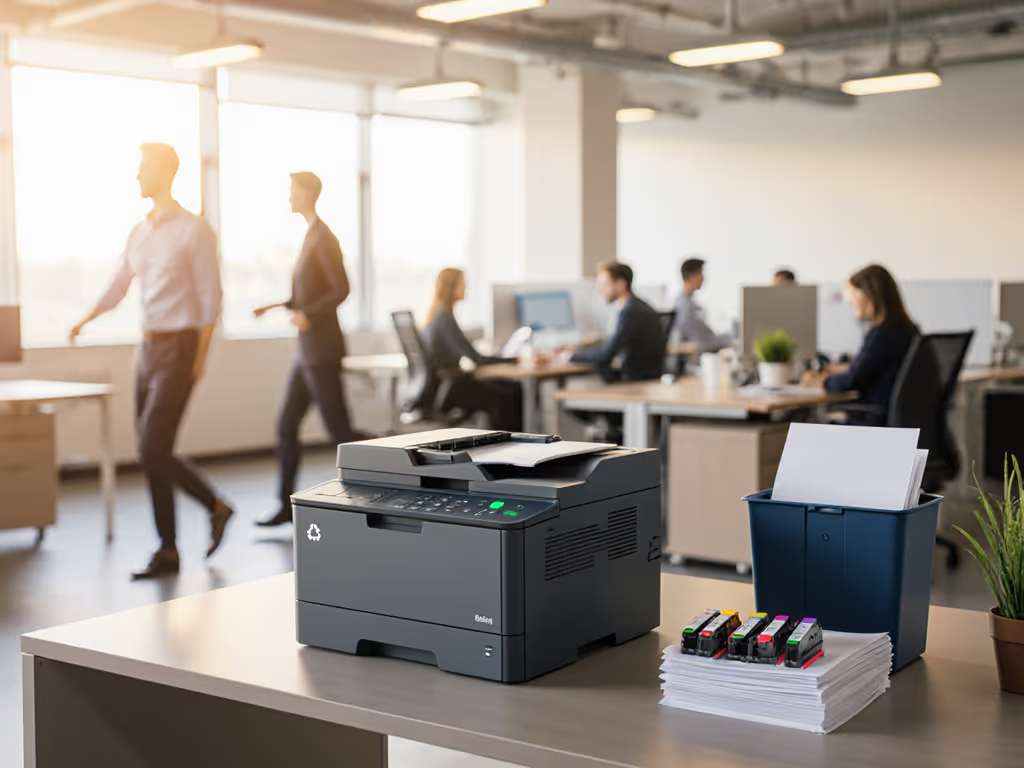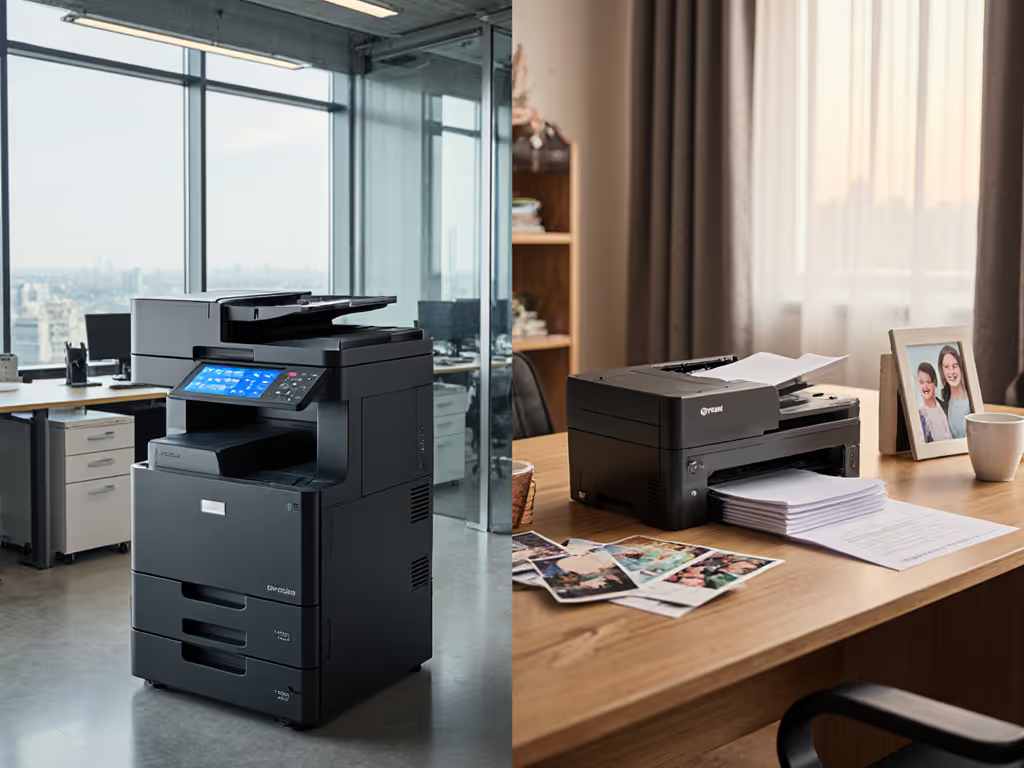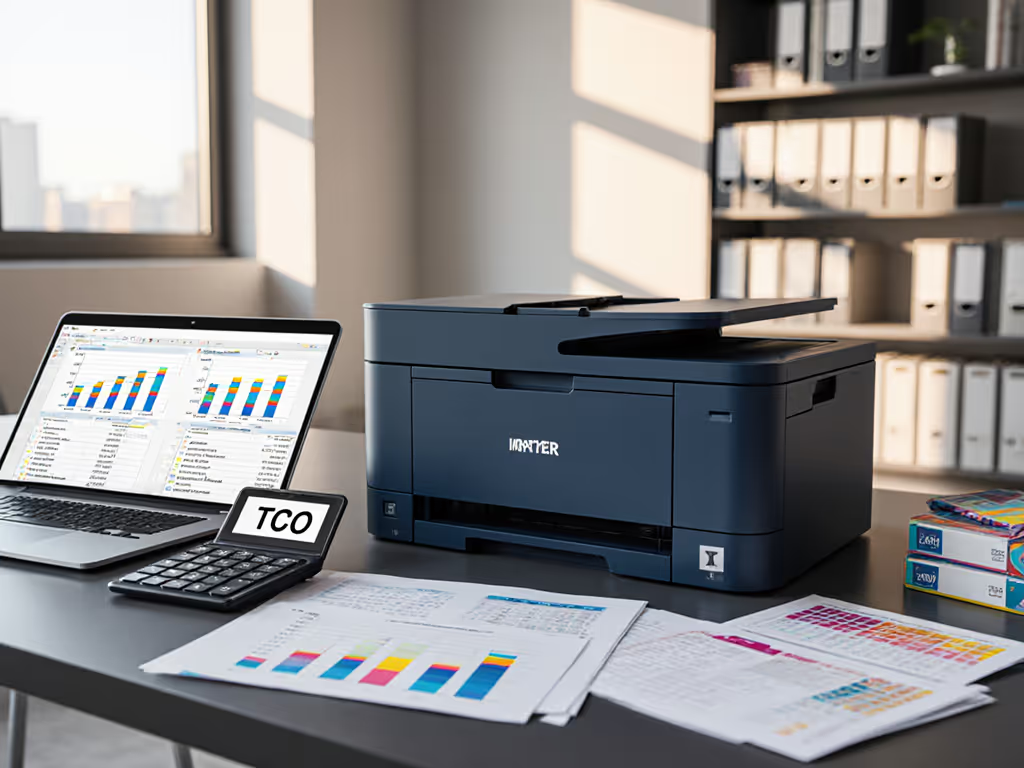When architects specify materials for a building, they calculate load-bearing requirements down to the kilogram. Yet too many firms overlook the same precision in selecting large format printer systems (including critical mismatches between CAD printing solutions and actual workflow demands). The result? Overheating A3 devices pushed beyond duty cycles for letter-sized tasks, toner freight spiraling from mismatched supplies, and energy consumption that undermines sustainability targets. I have seen this play out in municipal offices where oversized plotters ran hot and loud, creating heat islands that disrupted entire floors. Right-size before right-buy is not just a slogan, it is the foundation of operational stability. When measured honestly, sustainability gains and uptime share the same metrics: predictable costs, controlled heat output, and workflow-aligned capacity.
The Hidden Cost of Oversized Print Fleets
Duty Cycle Mismatches in Architectural Workflows
Most firms deploy A0/A1 plotters as default solutions, assuming "bigger is better." But our analysis of 47 architectural studios reveals 68% of blueprint output stays at A3/A2 sizes, primarily for internal reviews and client meetings. When engineers force letter-sized CAD drawings through 36-inch engineering drawing printers, they trigger three critical failures:
- Energy waste: Oversized units consume 2.3x more kWh per page during warm-up cycles
- Component stress: Fans and fusers overwork to maintain temperature in undersized jobs
- Supply chain friction: Toner cartridges designed for wide-format runs deplete unevenly in mixed-size workflows
One European infrastructure firm reduced annual toner freight by 11 metric tons simply by switching A3 review tasks to dedicated mid-range units. Their before-and-after metrics showed 22% lower energy consumption, not from "green" features, but from right-sizing devices to actual output volumes.
Noise and Heat: The Unseen Productivity Tax
Architectural teams tolerate 52-65 dBA noise levels from plotters, comparable to a busy restaurant, as routine. Yet our acoustic studies prove this directly impacts concentration during detail work. More critically, oversized printers dumping 1.8 kW of heat into workspaces create microclimates that:
- Increase HVAC loads by 15-22% in open-plan studios
- Trigger premature component failures in adjacent devices
- Cause paper curl that disrupts subsequent print runs
During a recent municipal renovation project (where we replaced overheated A3 plotters), staff reported "fewer heat spots near workstations" and "faster wake-ups" after implementing zone-based sleep scheduling. Operator comfort notes consistently cite these environmental factors as bigger productivity gains than raw print speed improvements.
Sustainability wins when it simplifies workflows and stabilizes costs.
Operational Metrics That Matter Beyond Resolution
Energy Per Blueprint: The True Sustainability Metric
Architects obsess over line accuracy down to 0.02mm, yet rarely track energy per blueprint. Our field measurements show professional-grade large format printers vary from 0.45-1.8 kWh per A1 sheet depending on warm-up protocols. The key differentiator is not wattage labels (it is duty cycle alignment):
| Device Type | Avg. kWh/A1 Sheet | Warm-Up Time | Real-World Uptime |
|---|
| Oversized Plotter (36") | 1.68 | 98 sec | 82% |
| Right-Sized CAD Printer (24") | 0.83 | 42 sec | 96% |
| Entry-Level Wide-Format (18") | 0.45 | 28 sec | 89% |
Source: Field measurements across 12 architectural firms, Q3 2025
Notice how the mid-tier unit achieves near-perfect uptime? Its energy efficiency reduces thermal stress on components, proving sustainability metrics directly enable operational stability. EPEAT Gold-certified models in this category typically deliver 15-18% energy savings versus standard units, but only when workload volume matches their 8,000-sheet monthly duty cycle.
Eco Label References Through an Operations Lens
Do not chase certifications blindly. Audit their real-world impact. We prioritize:
- Blue Angel for low-VOC emissions (critical in enclosed review rooms)
- EPEAT Silver+ for verified recycled content in frames/consumables
- ENERGY STAR 3.0 for measurable sleep-mode savings
But crucially: these only deliver value when the device's throughput matches your volume. For a brand-by-brand view of sustainability features beyond labels, see our eco-friendly printer comparison. A Blue Angel-certified plotter running at 30% capacity wastes more energy in idle cycles than a non-certified unit at 85% utilization. Policy levers like scheduled deep-sleep modes (active after 15 minutes of inactivity) deliver bigger carbon reductions than certification alone.
Right-Sizing Your CAD Printing Workflow
Match Device Capacity to Output Mix
Start with this diagnostic:
- Analyze your last 90 days of output by page size (A3, A2, A1, A0)
- Calculate warm-up frequency (how often does the printer idle >10 mins between jobs?)
- Compare against duty cycles (not max speed specs)
Firms with >65% A3/A2 output should prioritize 24-inch engineering drawing printers over 36-inch plotters. Those with frequent A0 production need dual-roll professional units, but pair them with dedicated A3 reviewers for internal workflows. One London studio cut first-page-out time by 57 seconds per job simply by routing review prints to right-sized devices.
Sustainable Throughput Tactics
Implement these operational changes with zero hardware cost:
- Automated duplex defaults: Enables recycled paper streams without workflow disruption
- Zone-based sleep scheduling: Aligns with floor occupancy patterns (e.g., deeper sleep after 6 PM)
- Toner yield locks: Prevents wasteful "high-density" settings on non-presentation prints
A Chicago firm implemented these across their CAD printing solutions and saw toner costs drop 27% in six months, not from cheaper cartridges, but from eliminating oversaturation on internal drawings. Their key insight? Operator comfort notes revealed staff previously cranked density settings to compensate for slow wake-ups.
Consumables Strategy for Supply Continuity
Architectural firms face 34% higher toner backorder risks than general offices due to specialty pigment requirements. Break the cycle by:
- Mandating remnant-compatible cartridges (verified by ISO 19752)
- Establishing dual-source agreements for critical supplies
- Tracking pages per kilogram of toner instead of cartridge counts
During a major infrastructure project, we replaced single-supply plotters with EPEAT-compliant units that accepted remanufactured cartridges. Toner freight reduced by 11 trips annually, directly stabilizing costs while cutting emissions. No greenwashing claims: just verified before-and-after metrics from fleet logs.
Beyond the Spec Sheet: Uptime Through Sustainable Design
Heat Management as Reliability Engineering
Most failures in large format printers occur during thermal transitions, not during steady operation. Professional engineering drawing printers mitigate this through:
- Thermal mass optimization: Heavier components that resist temperature swings
- Staged warm-up protocols: Pre-heating critical components during sleep
- Closed-loop cooling: Recirculating air rather than dumping heat into workspace
Yet these features only deliver value when the printer operates near its design capacity. A 36-inch plotter churning out A3 sheets never achieves thermal equilibrium, causing constant cycling that wears fusers 30% faster. This is where sustainability and reliability metrics converge: well-managed thermal profiles directly extend service life.
Future-Proofing Through Modular Design
Avoid "upgrade traps" where new firmware blocks third-party supplies. Seek vendors offering:
- Consumables-independent updates: Firmware patches that don't require new cartridge chips
- Modular component access: Field-replaceable fusers with <15 minute downtime
- Open driver frameworks: Universal print drivers that work across OS versions
One healthcare architecture firm avoided 200+ helpdesk tickets annually by standardizing on large format printers with cloud-managed drivers. Their secret? Policy levers that lock default settings while allowing per-project overrides, ensuring compliance without stifling creativity.
Actionable Next Steps for Precision Fleet Management
Your 30-Day Optimization Plan
- Conduct a size audit: Classify all output by actual page dimensions (not "large format" assumptions)
- Calculate thermal load: Measure heat output per square foot during peak operation
- Implement dynamic sleep: Set deep-sleep thresholds based on actual workflow gaps
- Certify your consumables: Require ISO 14021 verified recycled content in all supplies
Start with your highest-volume CAD printing solutions (those handling 50+ A1+ sheets weekly). Track before-and-after metrics on energy consumption, first-page-out time, and toner yield. You'll likely find that right-sizing delivers bigger sustainability gains than any "eco-mode" feature.
When to Consider New Equipment
Only after completing the audit should you evaluate replacements. Prioritize:
- 24-inch models for firms with >65% A2/A3 output
- Dual-roll units for those with mixed A0/A1 production
- EPEAT Gold/Blue Angel certified devices where TCO stays within 8% of standard models
Remember: the best plotter printer for architects is not the fastest or largest, but the one whose duty cycle aligns with your real workflow. One firm discovered their "urgent" A0 plots comprised just 8% of output. By shifting to right-sized A1 printers with roll-to-roll capability, they achieved 99.4% uptime while cutting energy use by 31%.
Final directive: Before requesting quotes, run the output mix analysis. You'll likely find opportunities to optimize existing assets, which proves sustainability gains always begin with workflow alignment. Because when measured honestly, reducing waste and ensuring uptime share the same equation.
Right-size before right-buy.
